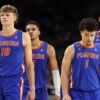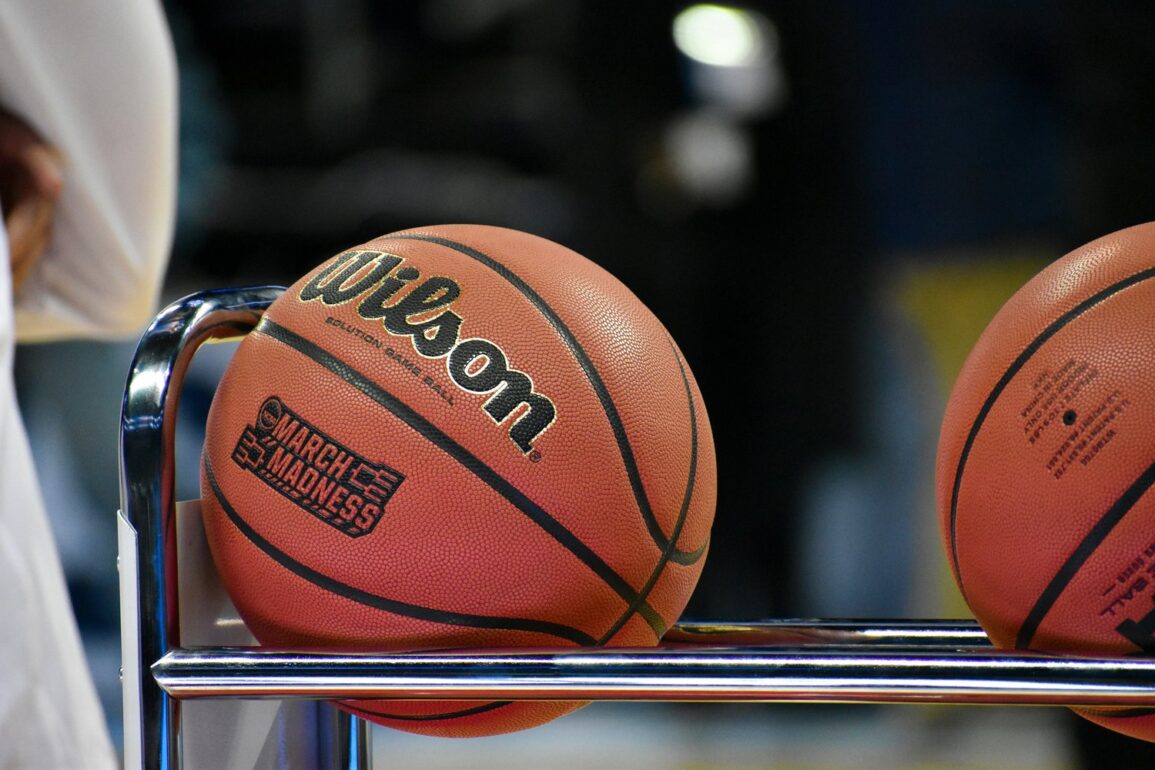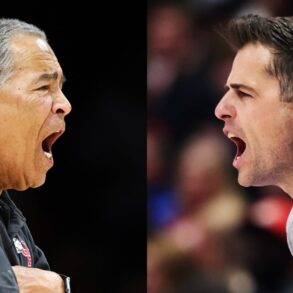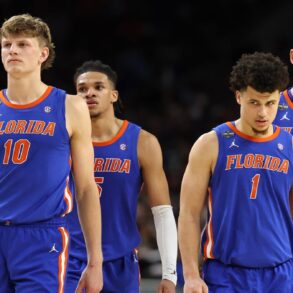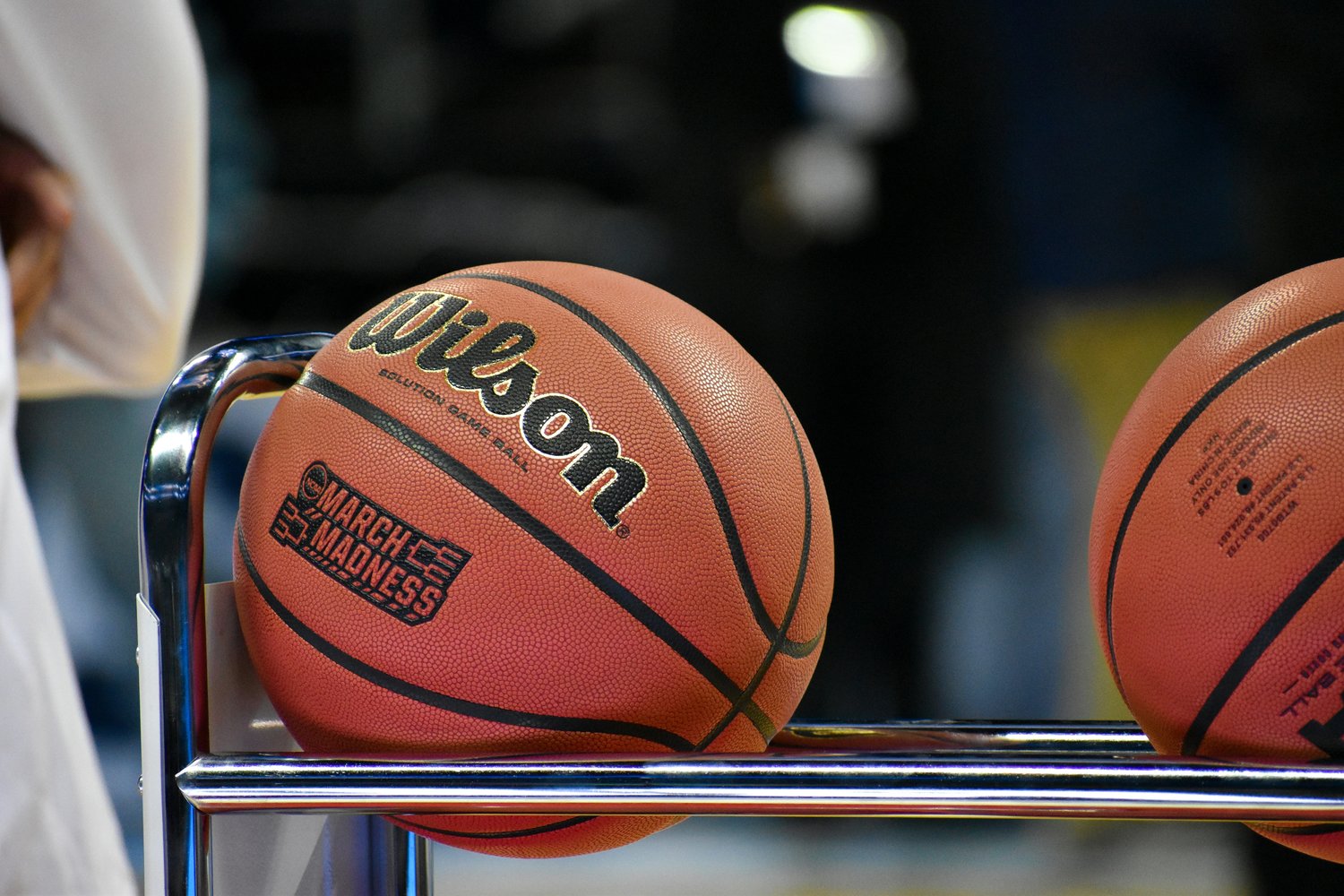
I grew up hearing that women’s basketball is so much worse than men’s, and I never saw the games being advertised anywhere. Looking back, it’s hard to understand why.
It’s easy to fall down a rabbit hole of old women’s March Madness games — although they couldn’t actually use that trademark until just a few years ago — and in doing so you’ll realize that anybody who kept you from watching those games was keeping immense entertainment away.
Women have had to deal with, for lack of a better term, shitty environments in college basketball. The worst of which was during the COVID-19 pandemic, where their facilities for the ‘bubble’ tournament were way less nice than the men’s.
Despite everything they’ve gone through to get an equal playing field, and for people to pay some damn attention to them, women’s college basketball has always been awesome — you’re only just now paying attention.
Rewind all the way back to 1998.
The Harvard University Crimson traveled across the country, out to play the Stanford University Cardinals in front of a sold out crowd. It was a 16 versus a one-seed. Maples Pavilion was rocking, expecting their team to brush off their Ivy League foes with ease. But things didn’t go to plan.
Harvard jumped out to an early lead and spent the rest of the game doing their best to ward off Stanford’s comeback attempts. Yes, the Cardinals were undermanned with two of their best players injured. Yes, Harvard was well under-seeded. But this was a historic moment.
The Crimson won 71-67, led by Allison Feaster — the top scorer in the nation at the time. They silenced the crowd, beat a team who had made three consecutive final fours and put the Ivy League on the map for athletics.
Oh, and they were the first 16 to ever win an NCAA tournament game. It would take 20 years for a one-seed to lose in the first round on the men’s side, with the University of Maryland, Baltimore County defeating the University of Virginia by 20.
The game had drama and moments of pure brilliance and a crowd of 7,000 fans that sounded like 50,000 at times. Rarely, however, is it mentioned amongst the best moments in college basketball history.
If we rewind even further, you get to the great University of Southern California (USC) baller Cheryl Miller. The one who scored 105 points in her senior year at Riverside Polytechnic High School. The one who led USC to back-to-back championships in the ‘80s.
The one who usually only gets brought up in the same breath as her NBA legend brother, Reggie Miller. Even in trying to call out the inequalities between women and men’s basketball, you have to mention them together. And that’s unfair to her.
Cheryl Miller is one of the first greats of the game. Her USC teams won the second and third ever official NCAA national championships. Before Caitlin Clark was hitting shots from the parking lot, Cheryl Miller was swishing anything and everything, making passes into tight areas and defending her butt off.
I wasn’t alive when Harvard beat Stanford, and my parents weren’t even teenagers during Cheryl Miller’s prime. And yet I spent my night watching those highlights, and enjoying every moment even when I knew what was going to happen next. Good basketball is good to watch, no matter who is playing.
Even the University of Connecticut’s reign of terror in the 2010s brought some of the most jaw-dropping moments in sports history. Geno Auriemma had coached the team to 111-straight victories and two-straight national championships, part of a run of six titles in eight years. They were an impossible nut to crack.
That was until 2017, when Mississippi State University finally found a way through. It took overtime, and an improbable buzzer beater, but they did it. And the arena absolutely erupted.
UConn has not won a championship since then. That moment blew the college game wide open. In the seven tournaments since the Huskies won, there have been five different schools to win. The University of South Carolina has reigned as the new dominant force, under coach Dawn Staley, but not to the level their predecessors had.
The most impressive of those champions was certainly the University of Notre Dame in 2018. Star shooting guard Arike Ogunbowale was the best player in the country at the time, and she backed it up with the most clutch final four performance I’ve ever seen.
In Notre Dame’s semifinal matchup against none other than UConn, she hit a shot with one second left that ended their opponent’s undefeated season. Then, in an every crazier moment, she made a buzzer beater to knock off Mississippi State in the championship game. How did the internet not absolutely explode after those buckets?
There is clearly an inherent bias against women’s sports and towards the men. It’s been shifting in recent years as Clark, Angel Reese, Paige Bueckers and others have taken the sports world by storm. But the talent has been there. The nail-biting, edge-of-your seat, tell-your-friends about this type of games have always been there. Why hasn’t the fandom?
People lament about the lack of upsets and parity in the sport. I agree that it’s a problem, but it’s certainly one the men’s game is also facing right now — and a problem it experienced in the mid 2000s as well. Yet we all still watch the men’s games.
This year’s women’s Final Four delivered us a delicious national championship. South Carolina, trying to win their third title in four years, faced off against UConn who was trying to find their way back to the summit.
Ultimately, it was a domination by the Huskies as they got their hands on the title again. They got revenge for their loss in 2022, and now we’re set for a new rivalry of the two best dynasties of the past decade. Expect elite and entertaining basketball.
But there always has been elite and entertaining basketball.
Let’s not act like women’s basketball is only getting good now. Certainly it has improved over the years but, as a society, we’ve never given it the time of day to shine until recently.
This post was originally published on this site be sure to check out more of their content.



